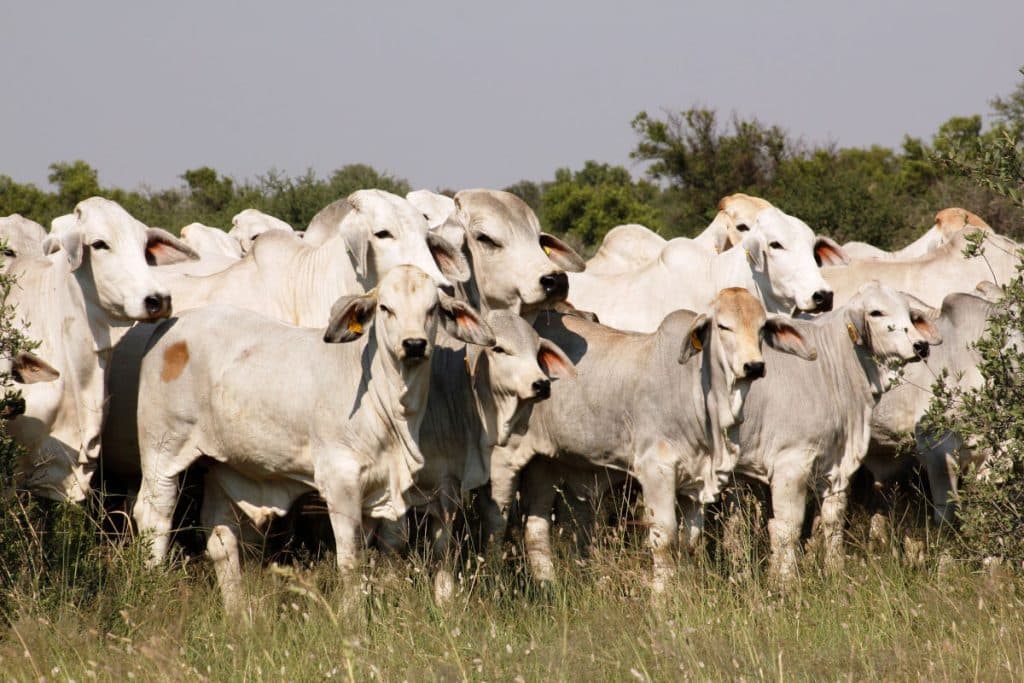Estimated reading time: 8 minutes
- When it comes to genetic progress in a herd, the simple truth is that a bull contributes up to 90% of this progress. This is a fact that beef cattle producers must never lose sight of.
- Successful bull selection is about more than simply buying a bull – genetic breeding material is purchased from a herd in which the economically relevant traits required to achieve a specific breeding goal have been captured over years, all in a bid to generate the most profit through sound breeding decisions.
- Producers need to take note of the fact that a bull’s influence in a herd can last for 25 years or more. If you choose the wrong bull when selecting a herd sire, that mistake will cost you dearly and could take decades to correct.
- Producing offspring is a bull’s single most important task. Should any doubts exist regarding a bull’s ability to accomplish this, he should not be considered at all.
- The environment has a sizable influence on the selection of a breed and type.
When it comes to genetic progress in a herd, the simple truth is that a bull contributes up to 90% of this progress. This is a fact that beef cattle producers must never lose sight of. Successful bull selection is about more than simply buying a bull – genetic breeding material is purchased from a herd in which the economically relevant traits required to achieve a specific breeding goal have been captured over years, all in a bid to generate the most profit through sound breeding decisions.
Read more about buying a better bull.
A bull is therefore not a cost item but an investment that will generate an income, improve a producer’s herd (his factory), and ensure future profits. This underscores the principle of having to spend money to make money, says Jan van Zyl, well-known breeder and owner of Kroon Vee Brahmans near Vryburg in North West.
He discussed the role of breeding bulls during the Livestock Registering Federation’s (LRF) Stockman School at Aldam in the Free State last year, explaining that his approach to breeding is to identify the weaknesses of the breed and turning them into strong points he then captures in his breeding stock.
The bull’s contribution
Producers need to take note of the fact that a bull’s influence in a herd can last for 25 years or more. If you choose the wrong bull when selecting a herd sire, that mistake will cost you dearly and could take decades to correct.
There is no denying the enormous influence bulls have. A cow, however, contributes 50% to the genetic makeup of her calf, making it even more important to select a bull from a cow with an intercalving period (ICP) as close to 365 days as possible and which has given birth to several calves – a high percentage of which have been retained in the herd. Also look at the bull’s grandmothers and their production records.

A producer wanting to purchase a bull must have a clear understanding of what he wants to accomplish with his herd. For this, he must identify the herd’s strong and weak points as well as the herd requirements the new bull must meet. The goal is to breed quality calves that are able to fetch higher prices than their predecessors.
Kroon Vee’s aim is to breed animals with economically relevant genetic traits that are accurate and predictable – in other words, animals that perform optimally and that can generate a sizable return on investment. For this, Van Zyl has a clear breeding goal and a meticulously put-together breeding strategy.
While bulls usually only make up around 3 to 4% of the animals in a breeding herd, they contribute 50% to their progeny’s traits. What’s more, the last three generations of bulls used in the herd contribute 87% to the genetic makeup of the calf. Bull selection contributes up to 90% to the genetic progress in a herd.
Read more about cattle selection here.
What makes a bull superior?
Producing offspring is a bull’s single most important task. Should any doubts exist regarding a bull’s ability to accomplish this, he should not be considered at all.
Here are traits that are indicative of fertility:
- The testes must not have any genetic abnormalities. It should be a decent size (make use of the breeding value for scrotal circumference or measure it yourself), and should have a normal shape without any swelling or hardening. The neck of the scrotum must not have any extra fat and the vas deferens must be well-developed. Test the semen for fertility.
- Valuable information includes the production data of the bull’s mother and grandmothers, such as age at first calving (AFC), average ICP, reproduction indices, as well as retention.
- The bull must have male features such as darker and coarser hair on the head, neck and forequarters. He should be alert, have a good libido, and protect and keep the herd together.
- A bull must have good walking ability, not only to walk to water and feed troughs or graze veld, but also to mate with cows when they reach oestrus. This requires strong legs and good claws without defects.
- The sheath should not be long and fleshy. The bull must have full control over it, the opening must not be too large, and the foreskin shouldn’t sag (prolapse).
- Be sure to research the herd, cow and bloodlines from which the bull comes. Confirm their achievements.
- Buy your bulls from well-known, reputable breeders who make a point of keeping accurate records and offer good after-sales service.
The progeny a bull produces must be able to adapt to the environment, farming system and market needs. Producers should therefore select a breed that is able to adapt to the region the farm is situated in and that suits their taste. Take note, though, that the variation in traits within breeds are often greater than between breeds.
Select for the environment
Cattle in South Africa are run under very different conditions: from hot summers with scant rainfall to humid regions. Winters are generally cold, and attention must be given to the hair coat and an animal’s ability to withstand heat or extreme cold.
Ticks and other external parasites are a challenge that producers must take into consideration when selecting the best animal for the job.
The environment has a sizable influence on the selection of a breed and type. Farm in harmony with your environment and select animals that will not only perform optimally in that environment, but will also be profitable. Records must be thorough, as the management information it provides can support your decision-making process.

The market demands tender, juicy and tasty beef. Breeding values exist for traits such as tenderness, fat cover and marbling. Unfortunately, the beef classification system in South African offers no incentive for breeders when it comes to selecting for these traits, except in cases where meat is sold under a specific brand.
There can be no guesswork involved when selecting a superior bull. Information is widely available, as are the tools necessary for a producer to make a decision with regard to the most suitable bull for his circumstances. The first and easiest step is to buy bulls from breeders who subject their animals to performance testing and keep accurate records.
What the cow contributes
Cow efficiency is also crucial. A cow contributes 50% to the genetic makeup of her calf. Van Zyl says he expects his cows to produce a calf every 365 days, and raise that calf well with enough quality milk until it is ready to be weaned. Meanwhile, the cow must regain condition soon after calving and be ready to reconceive come the next breeding season.
Commercial herds don’t often have these genetic breeding values available; it is therefore essential to acquire superior breeding material from breeders who pay close attention to these economically relevant traits.
Breeding cows must be feminine, have a wedge-shape towards the back, normal genitalia, and a well-balanced udder. Her navel should not be too long and fleshy, her coat should be adapted to the environment, and she must have strong legs and claws without abnormalities.
An efficient cow will make a valuable contribution to the success of a beef cattle enterprise. This is where meticulous records come into play, stresses Van Zyl, as it will identify these cows as well as the grass thieves that need to be culled before they start costing you too much. – Andries Gouws, Stockfarm
For enquiries, contact Jan van Zyl on 082 444 5222 or jan@kroonvee.com.






